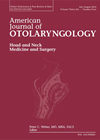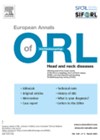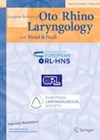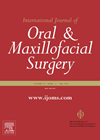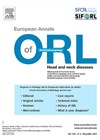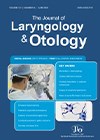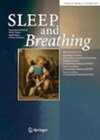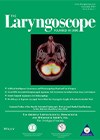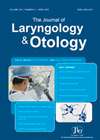
Journal Reviews
Does transoral robotic surgery improve outcomes among patients with head and neck cancer of unknown primary?
A tonsillectomy and tongue base mucosectomy is becoming increasingly accepted as the optimal surgical intervention to aid in identifying the primary source of a p16+ / HPV-related squamous cell carcinoma (SCC) of unknown origin, given that this disease almost exclusively...
Septoplasty revisited
Septoplasty is one of the commonest rhinological surgeries performed. With the advent of minimally invasive surgical concepts, endoscopic targeted septoplasty was introduced. This study aimed to compare the complications and outcomes between endoscopic septoplasty and conventional septoplasty by a PRISMA...
Organoids in otolaryngology
This interesting review article summarises the status as well as future prospects of organoid technology in our field. Organoids are a mass of cells which are typically cultured in vitro with 3D technology. They simulate miniature tissues and organs and...
Helmets make a difference in bicycle injuries
This is a meta-analysis of maxillofacial injuries arising from riding a bicycle. The incidence of maxillofacial fractures in cycling accidents varies from 3-20% and, whilst the effectiveness of helmets in preventing traumatic brain injuries is well known, their protective effect...
Active surveillance for papillary thyroid cancers – what is the risk of progression?
Papillary thyroid cancers (PTCs) are generally considered to be indolent malignancies with favourable outcomes. Active surveillance (AS) has consequently been trialled as a management option for small PTCs with no evidence of regional lymph node involvement, especially papillary thyroid microcarcinomas...
Still not smelling
Post-Covid anosmia/hyposmia is a troublesome persistent symptom for lots of patients. Management is still elusive. This was a nationwide survey of ENT practitioners. Of the 715 surveyed members, only 7.4% responded. Most performed a nasal endoscopy, 60% ordered an MRI...
Occurrence of cancer in asymmetrical tonsillar enlargement in adults
With significant increase in head and neck cancer in the last decade, attributed to HPV, fast-track referrals from primary care have markedly increased, adding further to the burden on the NHS. Whether or not unilateral tonsillar enlargement alone, without red...
Infection and other factors influencing post-tonsillectomy haemorrhage
In this detailed narrative review article, the authors have addressed several factors which could be related to postoperative bleeding after tonsillectomy. As regards to microbiology, the significance of micro-organisms present both on surface and within the tonsils is emphasised and...
Does pregabalin help with post-tonsillectomy pain?
This is a small double-blind randomised controlled trial conducted on tonsillectomy and lateral pharyngoplasty operations. Both of these operations are terrifically painful, and I am sure most of us are looking for a way of reducing the suffering for our...
How does temporomandibular dysfunction affect voice-related quality of life?
Temporomandibular dysfunction (TMD) is a group of neuromuscular or musculoskeletal problems that affect the muscles and fascia related to chewing and jaw opening. Patients are often seen in ENT clinics because of symptoms such as trismus, pain and muscle tension,...
Parapharyngeal space tumours – is the transoral approach effective?
Several approaches are described to the parapharyngeal space to permit resection of tumours in this region, with the most commonly employed approach being the transcervical route. The transoral approach remains somewhat controversial as it is felt that this approach can...
Non-surgical and surgical management of arytenoids granuloma
Arytenoid granulomas are often a sequelae of laryngopharyngeal reflux (LPR). Unless there is suspicion of malignancy, they require a very balanced approach between conservative management and surgical intervention. The authors present a series of 62 patients with whom the primary...

